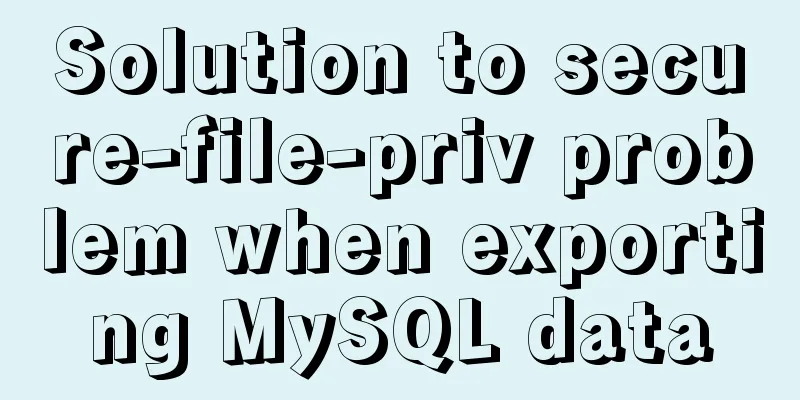vue-element-admin global loading waiting

Recent requirements:Global loading, all interfaces should be able to manually control whether to display the loading waiting function I searched Baidu and found that many of them are written in the interceptor. The loading method of element ui is called in the interceptor. Loading starts when the interface is requested, and loading is closed when the interface returns or the interface reports an error and throws an exception. I changed this idea a bit because it is a little different from my needs. Our need is to manually control whether to display the loading waiting function. Since it is manual control, we must not call the loading method directly in the interceptor. One step forward, when calling the interface, we start to control whether to enable the loading method. I need to manually encapsulate the call of axios. I encapsulated axios when I developed it before. Code:
url: interface api, data: parameters dom: When passing class or id in html, you need to add './#', because loading will use the querySelector attribute method of js. This attribute is used to distinguish whether the loading wait is the whole page loading wait or a certain part of the dom loading wait. It is not necessary to pass it. The default is to wait for the whole page to load. bool: distinguish whether to enable loading wait -- not required, default is to enable loading wait In the picture, I encapsulate multiple types of axios. Not all requests need to be loaded and waited. The default get request here is to load some initial data, which does not need to be shown to customers. I only added so many parameters in the post to distinguish whether loading and waiting are required and whether global and local loading and waiting are required. In addition, the axiosDownload request is a file stream type, which is a special request. It is distinguished to facilitate data processing in development. Basically, all of this part needs to be loaded and waited, because we need to tell customers that the data is being downloaded. The method before requesting data is processed. After the request, the return method is almost the same as the one on the Internet and ends when the result is returned. Get rid of some interfering elements and look directly at the essence of the interceptor
The principle of the interceptor is to intercept once when the request is initiated and once again when the request is returned. The loading wait has been processed before the interceptor intercepts. There is no need to call the loading wait again when requesting. You only need to call the end of the loading wait when returning the interception. As shown below:
Let's take a look at the key loading and waiting method. This method is available on the Internet. This is basically borrowed from the method of the Internet master. It's been a while, and I forgot which master's code it was. I can't post the code of the master at the original address here. I hope that the master will not be angry when he sees it.
The method basically ends the global loading wait here This is the end of this article about vue-element-admin global loading waiting. For more related vue-element-admin global loading content, please search 123WORDPRESS.COM's previous articles or continue to browse the following related articles. I hope everyone will support 123WORDPRESS.COM in the future! You may also be interested in:
|
<<: Tomcat's method of setting ports through placeholders (i.e. parameter specification method)
>>: MySQL performance optimization: how to use indexes efficiently and correctly
Recommend
Example of how to deploy a Django project using Docker
It is also very simple to deploy Django projects ...
A detailed introduction to Linux memory management and addressing
Table of contents 1. Concept Memory management mo...
Install Kafka in Linux
Table of contents 1.1 Java environment as a prere...
How to upload the jar package to nexus via the web page
When using Maven to manage projects, how to uploa...
Simple implementation of Mysql add, delete, modify and query statements
Simple implementation of Mysql add, delete, modif...
Vue uses vue-quill-editor rich text editor and uploads pictures to the server
Table of contents 1. Preparation 2. Define the gl...
Detailed explanation of the significance of standard commit msg in JavaScript development
Table of contents The significance of standard co...
Solution to the cross-domain problem of SpringBoot and Vue interaction
Table of contents Browser Same Origin Policy 1. V...
Complete steps for vue dynamic binding icons
0 Differences between icons and images Icons are ...
A brief analysis of MySQL locks and transactions
MySQL itself was developed based on the file syst...
Analysis of MySQL data backup and recovery implementation methods
This article uses examples to describe how to bac...
Two ways to add a mask effect to the background image using background-color through CSS
If a div sets background-color and background-ima...
JavaScript to make the picture move with the mouse
This article shares the specific code of JavaScri...
Tutorial on how to deploy LNMP and enable HTTPS service
What is LNMP: Linux+Nginx+Mysql+(php-fpm,php-mysq...
HTML table markup tutorial (10): cell padding attribute CELLPADDING
Cell padding is the distance between the cell con...













